No time to look away: conflict, economic collapse and coronavirus are pushing Yemen to the edge of famine
Arafat pushes a wheelbarrow through the streets of Sanaa, back to the rented room he shares with his wife and four children. Formerly a warehouse worker in Hodeida, on the shores of the Red Sea, the 37-year-old fled to the capital when conflict engulfed the port city, causing him to lose his job.
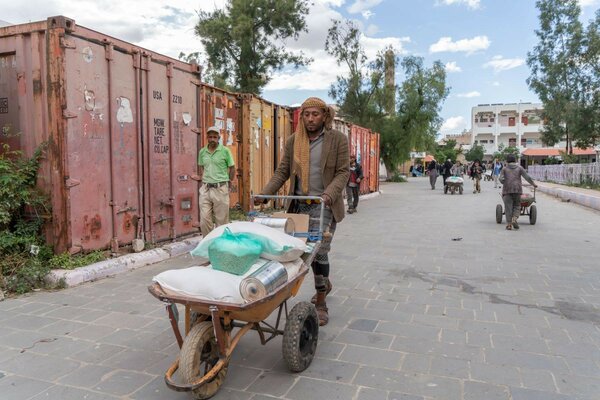
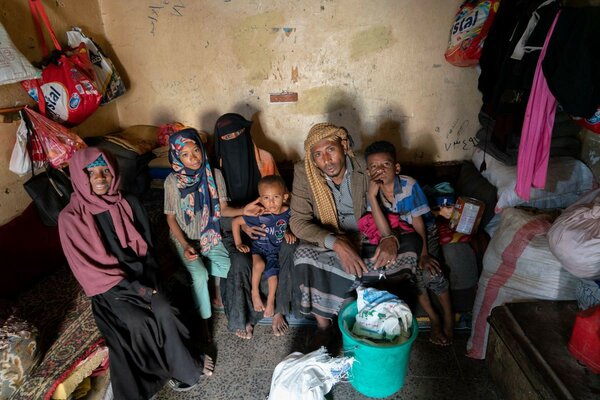
Although he works odd jobs, his earnings are nowhere near enough for his family of six. The food he is wheeling home from a World Food Programme (WFP) distribution — flour, dried beans, oil, sugar and salt — is what is keeping them from going hungry. But like many others in Yemen, Arafat is now receiving assistance on alternate months instead of monthly.
Like Arafat, the whole of Yemen is standing on a cliff edge. With conflict at its worst ever — fighting is raging across 40 different frontlines, with scores being killed and thousands displaced — and the economy on the brink of collapse, the country is at serious risk of being dragged back to where it was in 2018, when famine last loomed.
The situation today is even worse. The value of the local currency, the riyal, has hit the lowest levels ever seen and foreign currency reserves are almost exhausted, meaning vital food imports will soon become impossible. The price of food skyrocketed. Prices are now 140 percent higher compared to pre-war levels — with those for staples like vegetable oil and pulses having increased by nearly 50 percent in the last eight months alone. As a result, an ever-increasing number of people are unable to afford an adequate diet. Parts of the country are very difficult to access as frontlines shift, with humanitarian organizations struggling to reach some of those in greatest need.
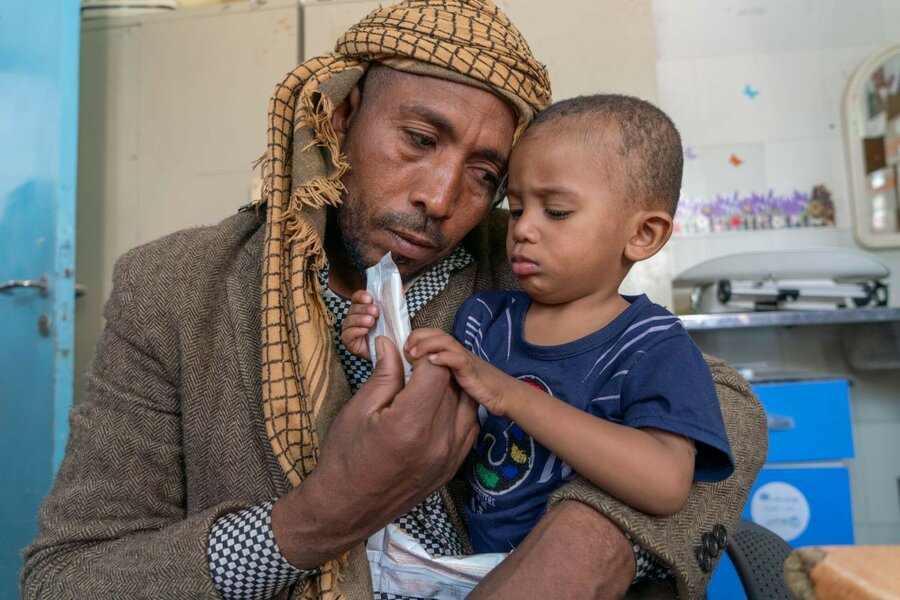
At the same time, WFP has had to cut food assistance in parts of the country because of a critical shortage of funds. Further reductions will soon be unavoidable.
The coronavirus pandemic is compounding this already dire situation: with the health care system in tatters after five years of conflict, Yemen has the world's highest fatality rate from COVID-19, and families are losing income from remittances from relatives overseas, particularly in the Gulf, who are now struggling to find work.
Deprived of the nutritious food they need for a healthy growth, children are the ones bearing the worst of the deepening humanitarian crisis. Arafat's two boys and two girls are no exception: Sultan, his youngest, was diagnosed with severe acute malnutrition.
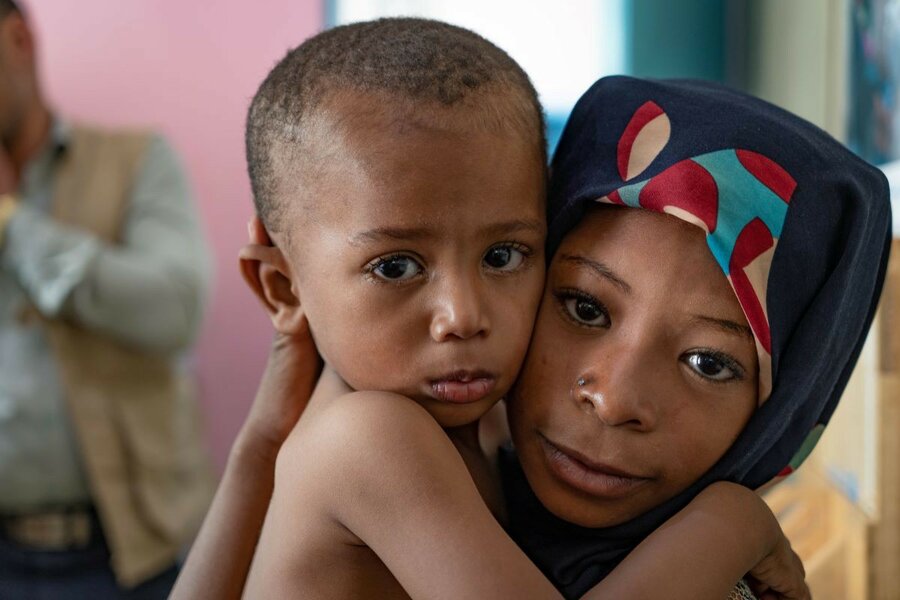
"Sultan was very weak when he was born. I was expecting that he would be better off for breastfeeding, but he didn't improve," says Arafat's wife, Om Sultan. When she took him to the nearest health centre, the doctor told her he was malnourished. "I was very afraid — afraid that I might lose him. How would a mother not fear for her child?" she continues.
"I do everything possible so my kids don't go to sleep hungry."
Thanks to the supplementary food he is receiving, Sultan has started to gain weight and has more energy than before. But he still needs treatment. Nearly half of Yemen's children are stunted, meaning their physical and mental development has been permanently affected by poor nutrition. Around 2 million children require nutrition support. Of these 360,000 are at risk of dying if they do not receive treatment.
"I do everything possible so my kids don't go to sleep hungry," says Om Sultan. The family has one meal in the morning and one at the end of the day, but there is little variety in their diets.
"The last time we ate chicken was about a month ago. Chicken is not a priority because it is very expensive and, for the same amount, I can buy ingredients for two meals as well as important things like diapers for Sultan," she says.
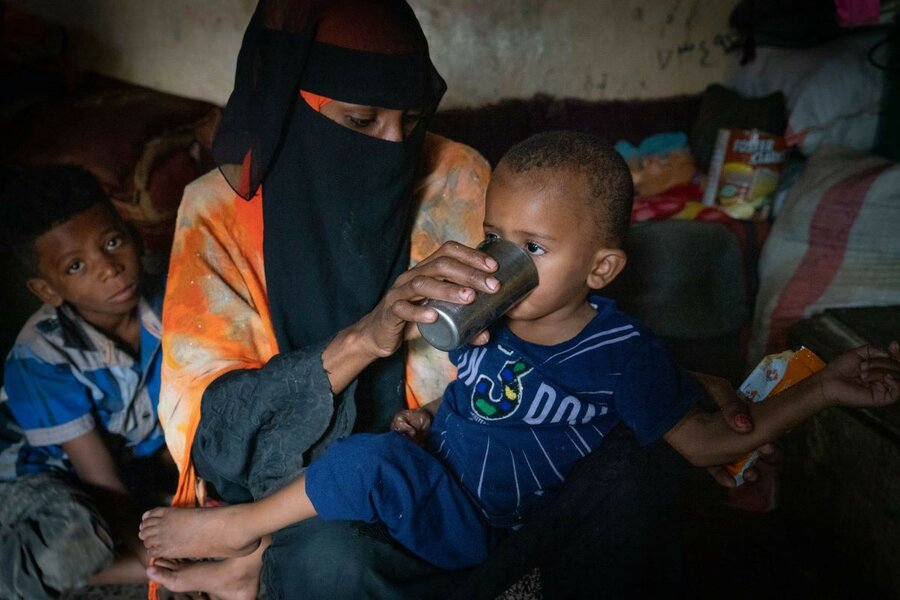
Like Arafat's family, two-thirds of Yemen's 30-million population are unable to put food on their tables
"Needs in Yemen are greater than they've ever been due to a poisonous cocktail of conflict, economic crisis and coronavirus. But support for humanitarian activities in the country is slumping," says Laurent Bukera, WFP's Country Director for Yemen. To run its operation in the country, WFP requires on average US$ 200 million a month. Cuts to food assistance have been made as the operation has received barely half of what it needed in 2020.
"We're doing everything we can with the support we've received. But it is not enough. We can't sit and watch as its people slip into catastrophe," Bukera says, calling for financial support as well as political efforts to secure safe and unimpeded access for humanitarian organizations across the country.


